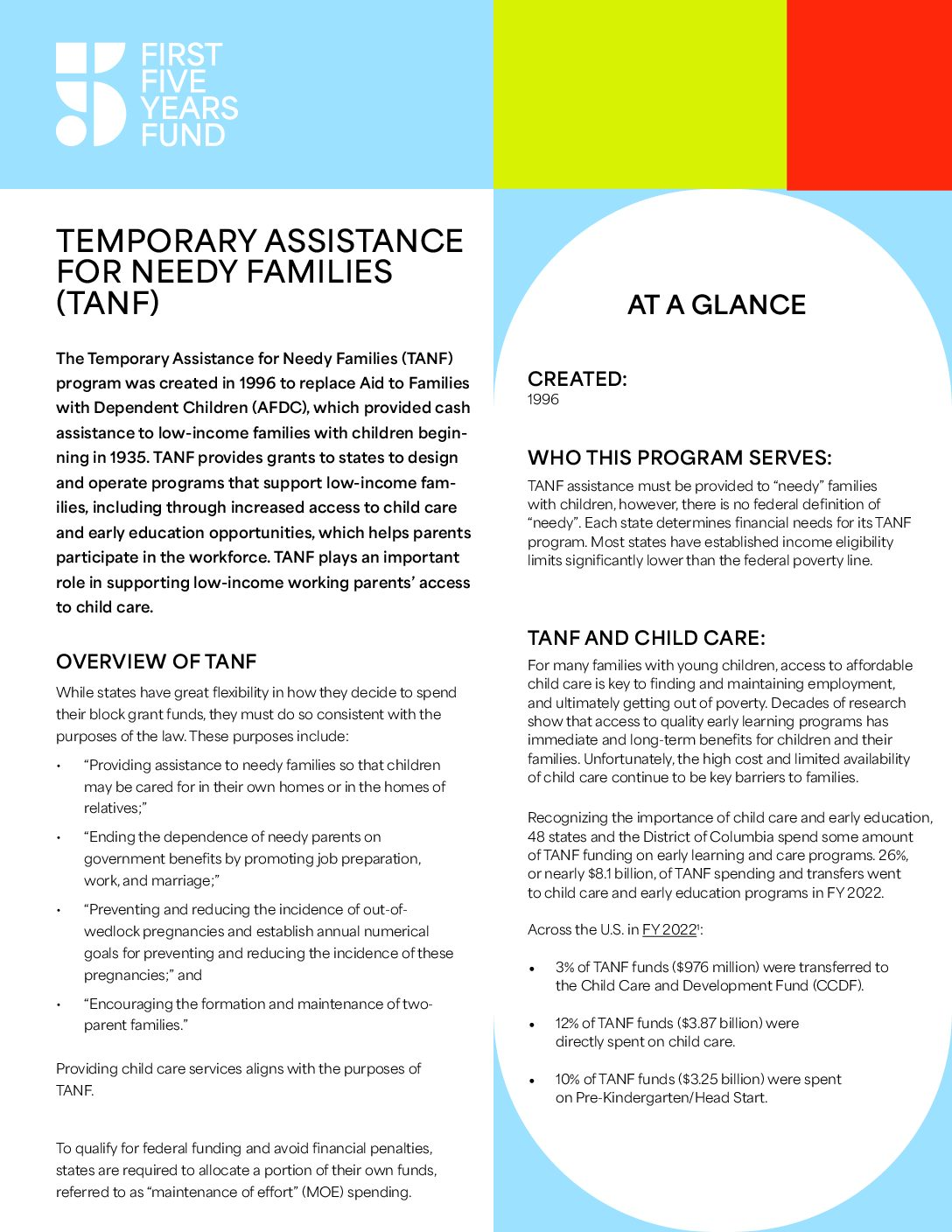Temporary Assistance for Needy Families (TANF) Program Overview

TANF provides grants to states to help design and operate programs that support low-income families, including through increased access to child care and early education opportunities, which helps parents to enter or return to the workforce.
Subscribe to FFYF First Look
Every morning, FFYF reports on the latest child care & early learning news from across the country. Subscribe and take 5 minutes to know what's happening in early childhood education.




